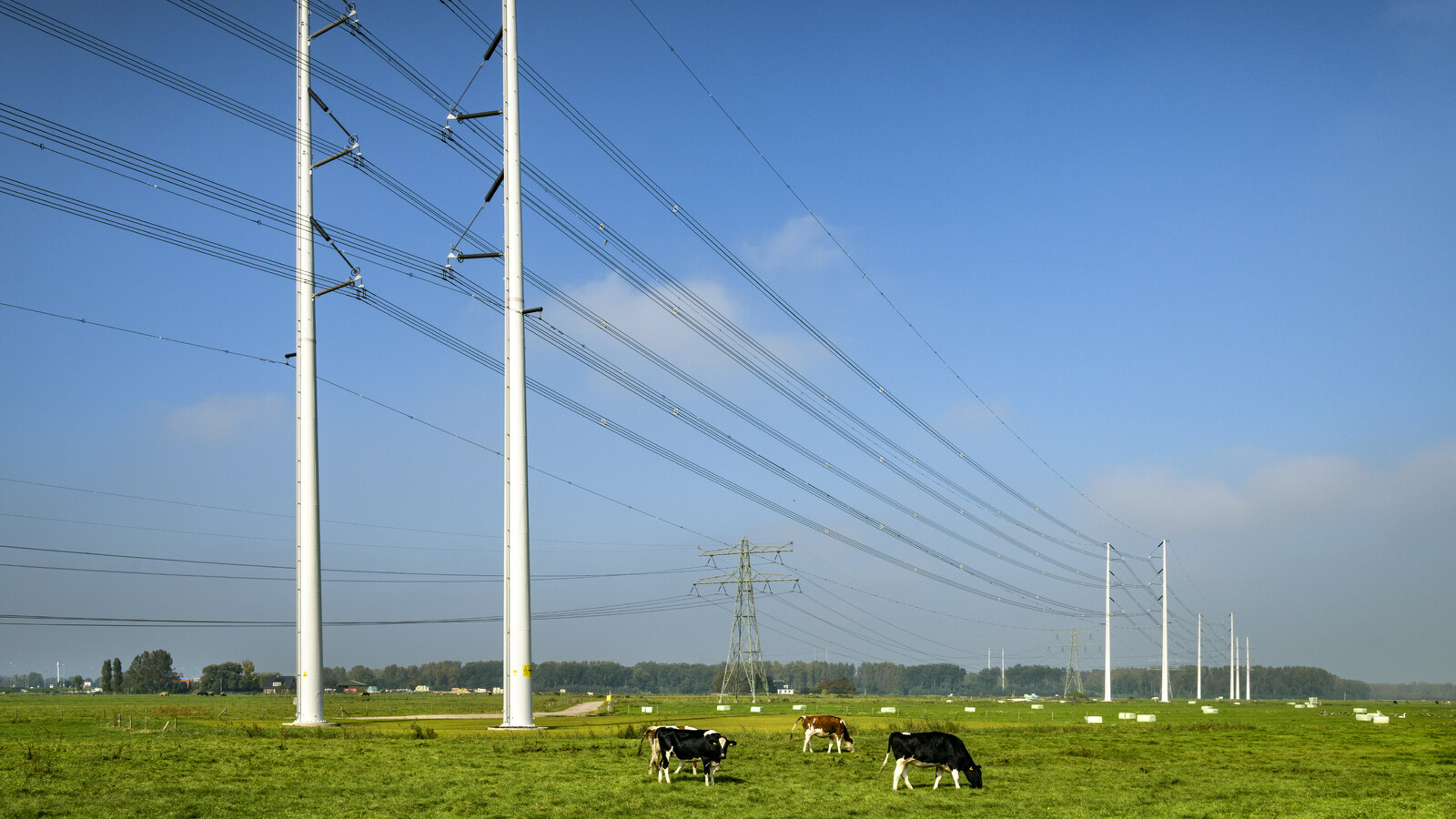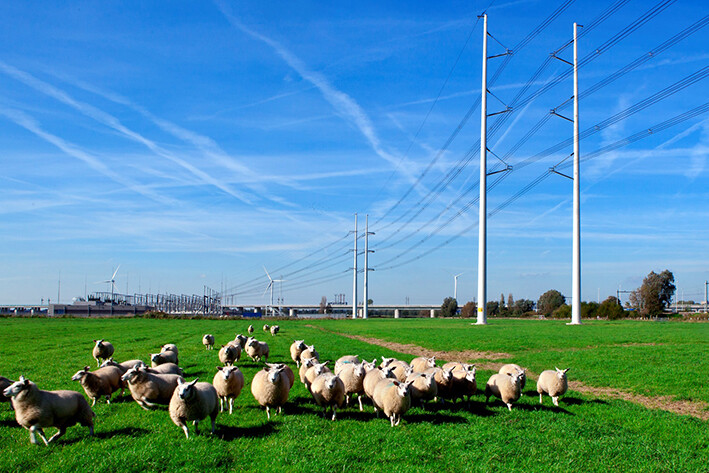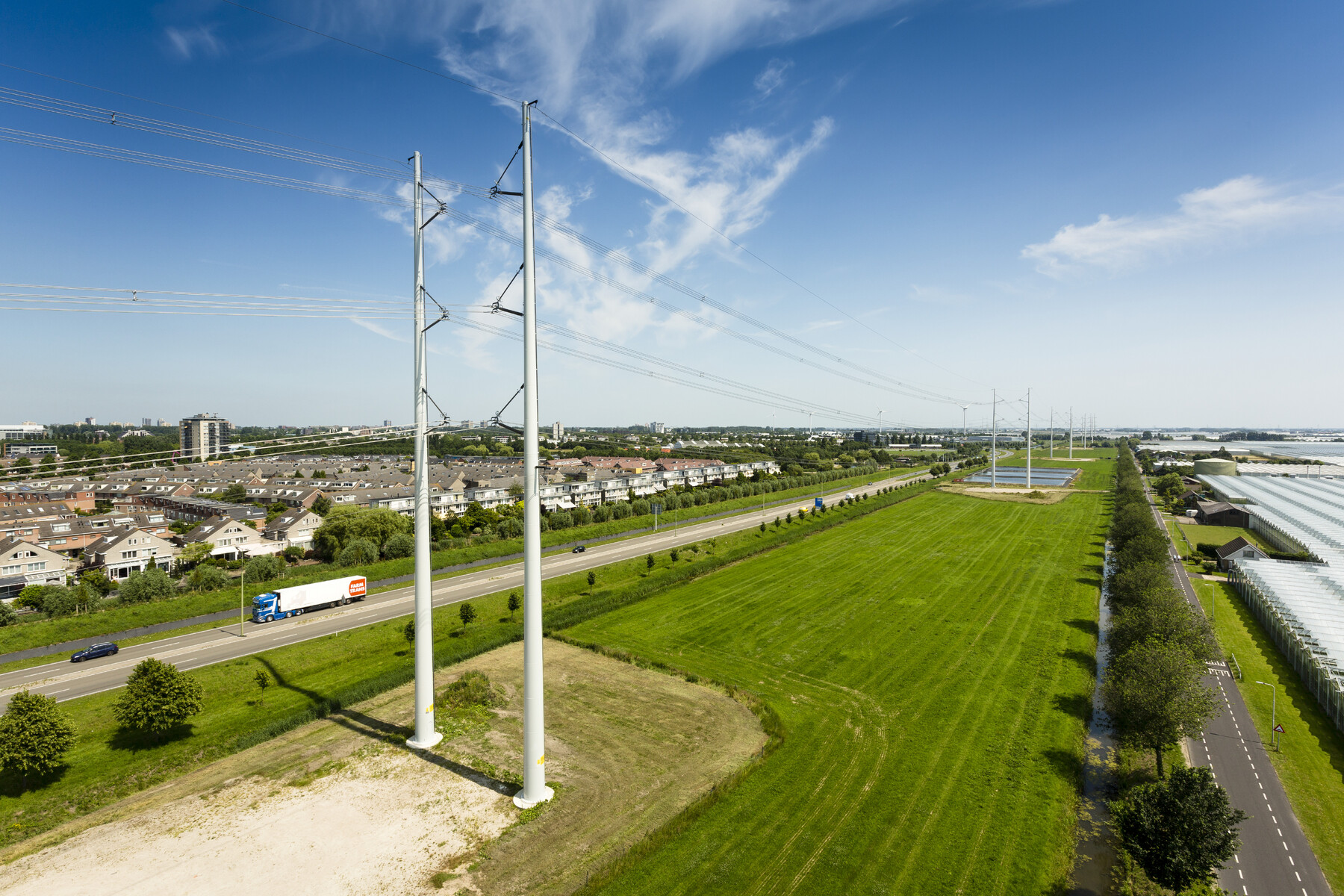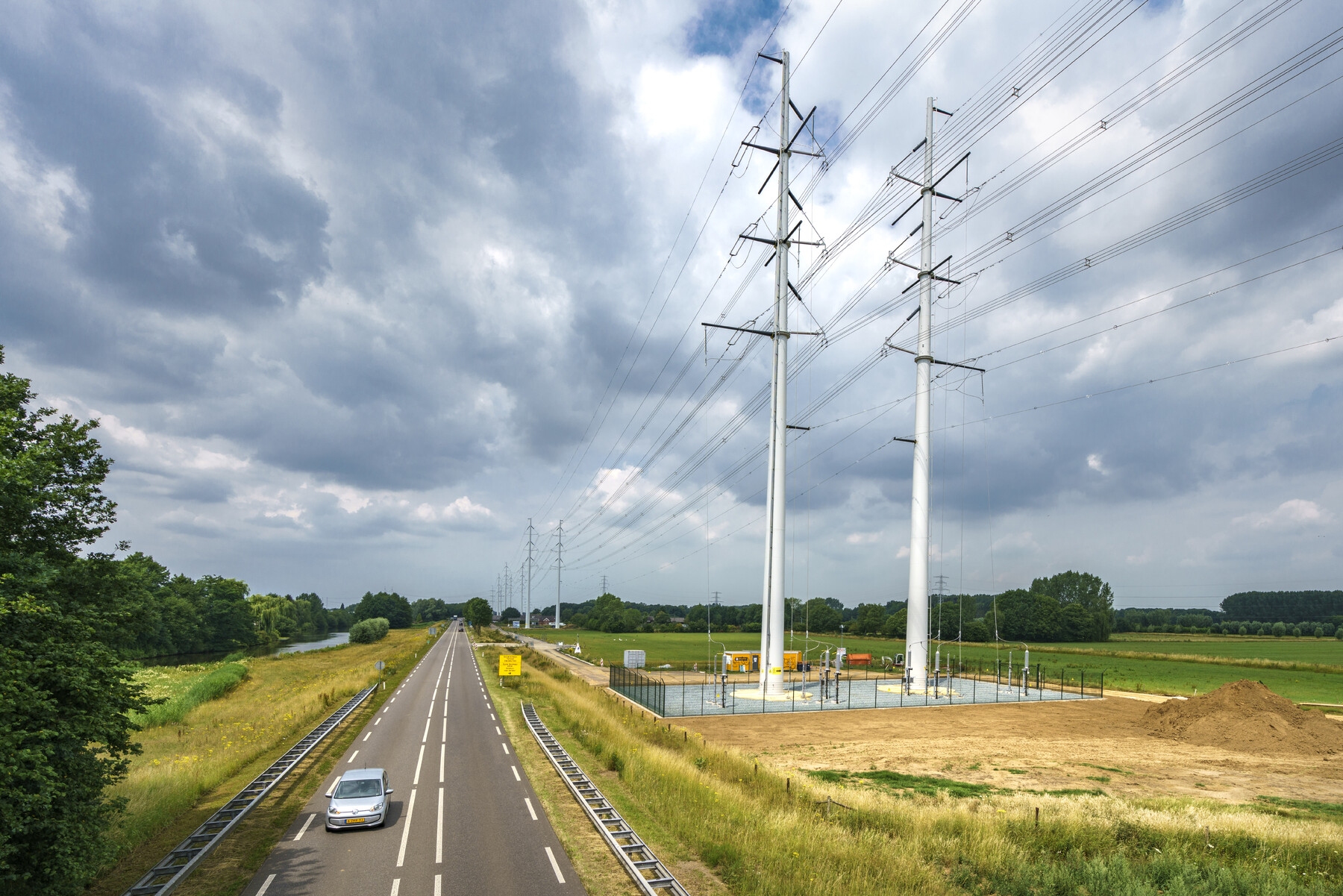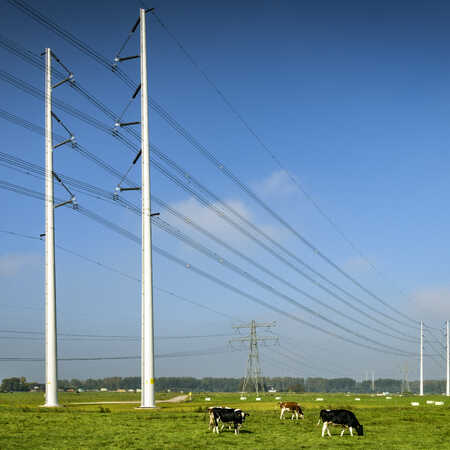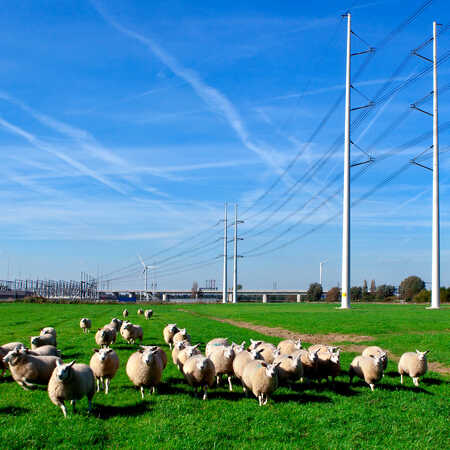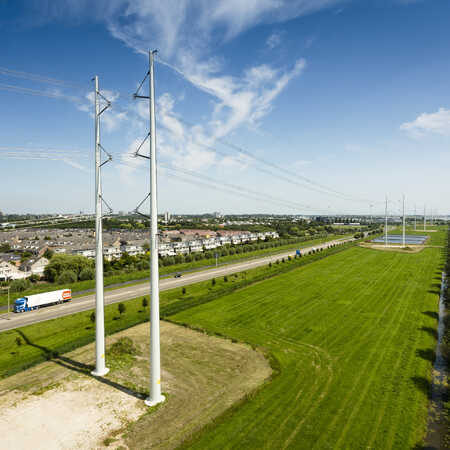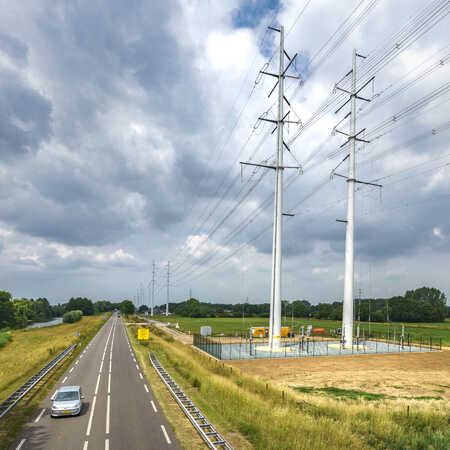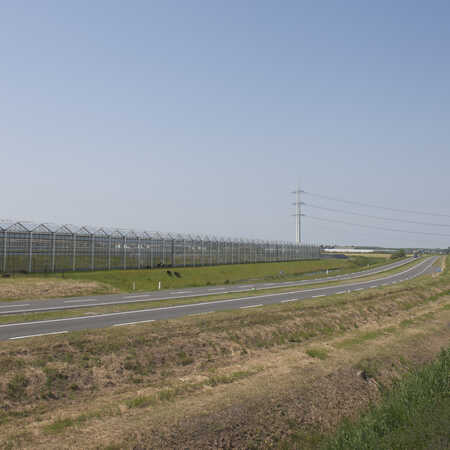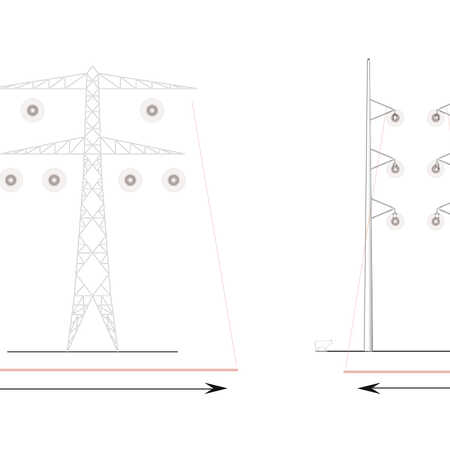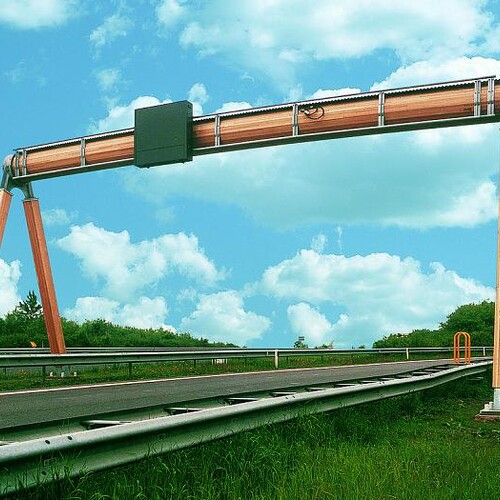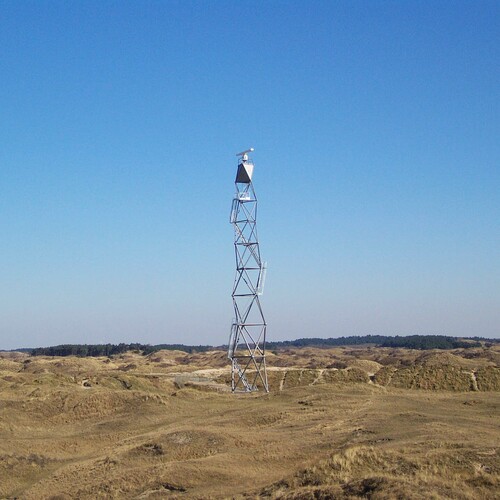The slender, papyrus-white pylons are integrated into the landscape more easily, minimizing the disruptive influence of the necessary energy supply on what everybody considers a unique part of the national heritage: the characteristic Dutch landscape. Despite all the technical requirements that come into play with these complex constructions the design stayed true to the values of simplicity and clarity. Thanks to the internal joints that hold the pylon together the pylons have a smooth look. This results in a slender silhouette. All the security features such as isolators, lightning conductors, mechanical wave interrupters attached underneath the cables to prevent so-called conductor gallop caused by high winds and ice, are designed to fulfill their function with minimal visual impact. This results in an unobtrusive mast that even has an intriguing elegance and simplicity when one pays attention to it.
There is quite a lot of technology and ingenuity hidden inside the family of Wintrack pylons that ZJA designed for TenneT. These tall, slender pylons transport huge quantities of electricity, not just the regular voltage but also double that amount or a combination of regular and middle high voltage. All these different combinations demand different pylons, because they all have specific technical and constructive requirements when it comes to the trusses, the suspenders, the isolators and the pylons used to turn corners and to control cable tension. The objective was to progress from the wide, sturdy industrial gestures of the framework pylon to the modest, slender needles of the Wintrack pylon that merge into the landscape. The beauty here lies in the seemingly effortless and simple solutions to hide all these enormous forces, powers and technical details from sight, in a safe and functional way.
